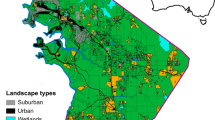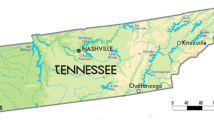Abstract
Sonoran Desert habitat in southern Arizona is increasingly altered by urban development near metropolitan areas. Understanding how reptiles respond in these impacted habitats is critical to conservation efforts to retain intact biotic communities, especially those with a high diversity of reptile species. We surveyed snakes at one impacted site on the northern edge of the Phoenix metropolitan area in desert/urban interface, and at another site in a desert/rural interface near Florence, Arizona. The site near Phoenix was lower in species richness (15 spp.), and evenness: two snake species accounted for 75 % of all snakes encountered (total = 420). The site near Florence was higher in species richness (19 spp.), and a more even community: no species accounted for more than 20 % of snakes encountered (total = 594). Sampling methodology had a strong influence on species richness and abundance of snakes at the respective sites: road riding, coverboards, and traps each provided evidence of unique species missed by other methods. These results were compared with inventories at three other sites in the central Sonoran Desert of Arizona, and are consistent with the view that the impacted site near Phoenix is uneven, potentially as a result of a single species reacting to shifts in prey availability.


Similar content being viewed by others
References
Andrews KM (2013) Road cruising. In: Graeter GJ, Buhlmann KA, Wilkerson LR, Gibbons JW (eds) Inventory and monitoring: recommended techniques for reptiles and amphibians, Partners in Amphibian and Reptile Conservation Technical Publication, vol IM-1, pp. 94–98
Bernardino FS, Dalrymple GH (1992) Seasonal activity and road mortality of the snakes of the Pa-hay-okee wetlands of Everglades National Park, USA. Biol Conserv 62:71–75
Brennan TC, Holycross AT (2005) Amphibians and reptiles of Maricopa County. Arizona Game and Fish Department, Phoenix, Arizona, USA 68 pp.
Brown DE (ed) (1982) Biotic communities of the American southwest, United States and Mexico. University of Arizona Press, Tucson, 342 pp
Burbrink FT, Myers EA (2015) Both traits and phylogenetic history influence community structure in snakes over steep environmental gradients. Ecography 38:1036–1048
Davis RA, Gole C, Roberts JD (2013) Impacts of urbanization on the native avifauna of Perth, Western Australia. Urban Ecosystems 16:427–452
Dodd CK, Enge KM, Stuart JN (1989) Reptiles on highways in north-central Alabama, USA. J Herpetol 23:197–200
Erb LA, Willey LL, Johnson LM, Hines JE, Cook RP (2015) Detecting long-term population trends for an elusive reptile species. J Wildl Manag 79:1062–1071
ESRI (2011) ArcGIS desktop: release 10. Environmental Systems Research Institute, Redlands
Hoffman HA, Leavitt DJ (2015) Sonoran Desert Tortoise (Gopherus morafkai) occupancy monitoring on the Arizona Army National Guard Florence Military Reservation: 2014 Report. Arizona Game and Fish Department, Phoenix. doi:10.13140/RG.2.1.4706.5681
Jochimsen DM (2006) Factors influencing the road mortality of snakes on the Upper Snake River Plain, Idaho. Pp. 351–365 In Proceedings of the 2005 International Conference on Ecology and Transportation. Irwin, C.L., P. Garrett, and K.P. McDermott (Eds.). Center for Transportation and the Environment, North Carolina State University, Raleigh, NC, USA.
Jones TR, Babb RD, Hensley F, LiWanPo C, Sullivan BK (2011) Sonoran Desert snake communities at two sites: concordance and effect of increased road traffic. Herpetol Conserv Biol 6:61–71
Kjoss VA, Litvaitis JA (2001) Community structure of snakes in a human-dominated landscape. Biol Conserv 98:285–292
Klauber LM (1939) Studies of reptile life in the arid southwest. Bulletins of the Zoological Society of San Diego 14:1–100
Krebs CJ (1999) Ecological methodology, 2nd edn. Benjamin/Cummings, Menlo Park
Leavitt DJ, Sturla DP, Abbate D (2013) Tucson Shovel-nosed Snake (Chionactis occipitalis klauberi) surveys on the Arizona Army National Guard Florence Military Reservation. Arizona Game and Fish Department, Phoenix. doi:10.13140/2.1.4973.3128
Litteral J, Wu J (2012) Urban landscape matrix affects avian diversity in remnant vegetation fragments: evidence from the phoenix metropolitan region, USA. Urban Ecosystems 15:939–959
Loughran CL, Nowak EM, Schofer JX, Sullivan KO, Sullivan BK (2013) Lagomorph prey of western diamondbacked rattlesnakes (Crotalus atrox) in Arizona. Southwest Nat 58(4):506–509
Luiselli F (2007) Community ecology of African reptiles: historical perspective and a meta-analysis using null models. African Journal Science 46:384–394
Magurran AE (2004) Measuring biological diversity. Blackwell Publishing, Malden
McDiarmid RW, Foster MS, Guyer C, Gibbons JW, Chernoff N (eds) (2012) Reptile biodiversity: standard methods for inventory and monitoring. U.C. Press, Berkeley, 424 pp
McKnight DT, Harmon JR, McKnight JL, Ligon DB (2015) Taxonomic biases of seven methods used to survey a diverse herpetofaunal community. Herpetol Conserv Biol 10:666–678
Mendelson JR, Jennings WB (1992) Shifts in the relative abundance of snakes in a desert grassland. J Herpetol 26:38–45
Pianka ER (1986) Ecology and natural history of desert lizards. Princeton University Press, Princeton
Price AH, LaPointe JL (1990) Activity patterns of a Chihuahuan desert snake community. Ann Carnegie Museum 59:15–23
Rosen PC, Lowe CH (1994) Highway mortality of snakes in the Sonoran Desert of southern Arizona. Biol Conserv 68:143–148
Shochat E, Lerman SB, Anderies JM, Warren PS, Faeth SH, Nilon CH (2010) Invasion, competition, and biodiversity loss in urban ecosystems. Bioscience 60:199–208
Sorace A, Gustin M (2009) Distribution of generalist and specialist predators along urban gradients. Landscape Urban Planning 90:111–118
Sullivan BK (1981a) Distribution and relative abundance of snakes along a transect in California. J Herpetol 15:247–248
Sullivan BK (1981b) Observed differences in body temperature and associated behavior of four snake species. J Herpetol 15:245–246
Sullivan BK (2000) Long-term shifts in snake populations: a California site revisited. Biol Conserv 94:321–325
Sullivan BK (2012) Road riding. In: McDiarmid RW, Foster MS, Guyer C, Gibbons JW, Chernoff N (eds) Reptile Biodiversity: Standard Methods for Inventory and Monitoring. U.C. Press, Berkeley 424 pp, pp. 215–218
Sullivan BK, Vernon JM (2015) Dipsosaurus dorsalis (desert iguana). Urban habitats. Herpetological Review 46:90–91
Sullivan BK, Vanhaverbeke R, Chambers C (2013) Wildlife and anthropogenic changes in the arid southwest. In: Malloy R, Brock J, Floyd A, Livingston M, Webb RH (eds) Design with the Desert: Conservation and Sustainable Development. CRC press, Boca Raton, pp. 169–191
Sullivan BK, Averill-Murray RC, Sullivan KO, Sullivan JR, Sullivan EA, Riedle JD (2014a) Winter activity of Sonoran Desert tortoise (Gopherus morafkai) in Central Arizona. Chelonian Conservation and Biology 13:114–119
Sullivan BK, Sullivan KO, Vardukyan DE, Suminski TS (2014b) Persistence of horned lizards (Phrynosoma spp.) in urban preserves of Central Arizona. Urban Ecosystems 17:707–717
Sullivan BK, Vardukyan DE, Sullivan KO (2014c) Historic and current composition of lizard communities in urban preserves of Central Arizona. Urban Naturalist 2014(2):1–18
Taylor EN, DeNardo DF (2005) Sexual size dimorphism and growth plasticity in snakes: an experiment on the western diamond-backed rattlesnake (Crotalus atrox). J of Exp Zoology 303A:598–607
Whittaker RH (1965) Dominance and diversity in land plant communities: numerical relations of species express the importance of competition in community function and evolution. Science 147:250–260
Wiens JJ (2015) Explaining large-scale patterns of vertebrate diversity. Biology Lettters 11:20150506. doi:10.1098/rsbl.2015.0506
Willson JD (2013) Aquatic and terrestrial funnel trapping. In: Graeter GJ, Buhlmann KA, Wilkerson LR, Gibbons JW (eds) Inventory and monitoring: recommended techniques for reptiles and amphibians, Partners in Amphibian and Reptile Conservation Technical Publication, vol IM-1, pp. 109–113
Acknowledgments
D. Abbate, J. Alcock, C. Beach, R. Bowker, W. Carroll, R. Don, H. Hoffman, E. Makings, A. Owens, M. Olsen, C. Rubke, A. Scuderi, D. Sturla, D., E. and J. Sullivan assisted with some field observations. Maricopa County Flood Control personnel, especially Lisa Amos, Erik Arntz, Shelby Brown, Charlie Klenner, Bill Leal, Theresa Pinto, and Diana Stuart provided considerable assistance at the CB site; Rob Patterson and Andy Long of the Phoenix Parks Department, and Roger Moncayo also provided assistance with site security. All research was permitted under Arizona Game and Fish Department Scientific Collecting Permits (2010-2015) and ASU IACUC approval for the CB site.
Author information
Authors and Affiliations
Corresponding author
Rights and permissions
About this article
Cite this article
Sullivan, B.K., Leavitt, D.J. & Sullivan, K.O. Snake communities on the urban fringe in the Sonoran Desert: influences on species richness and abundance. Urban Ecosyst 20, 199–206 (2017). https://doi.org/10.1007/s11252-016-0577-6
Published:
Issue Date:
DOI: https://doi.org/10.1007/s11252-016-0577-6




